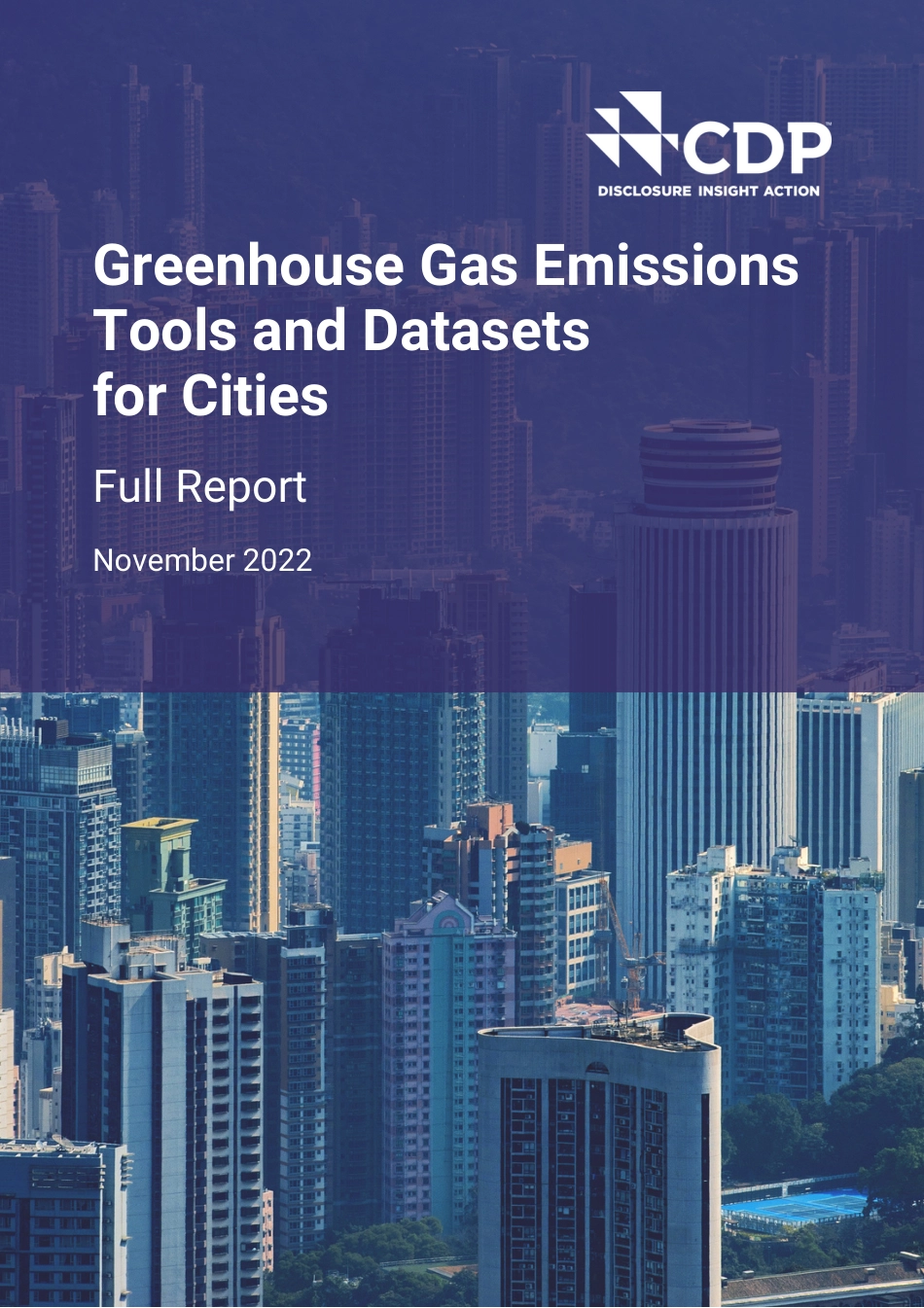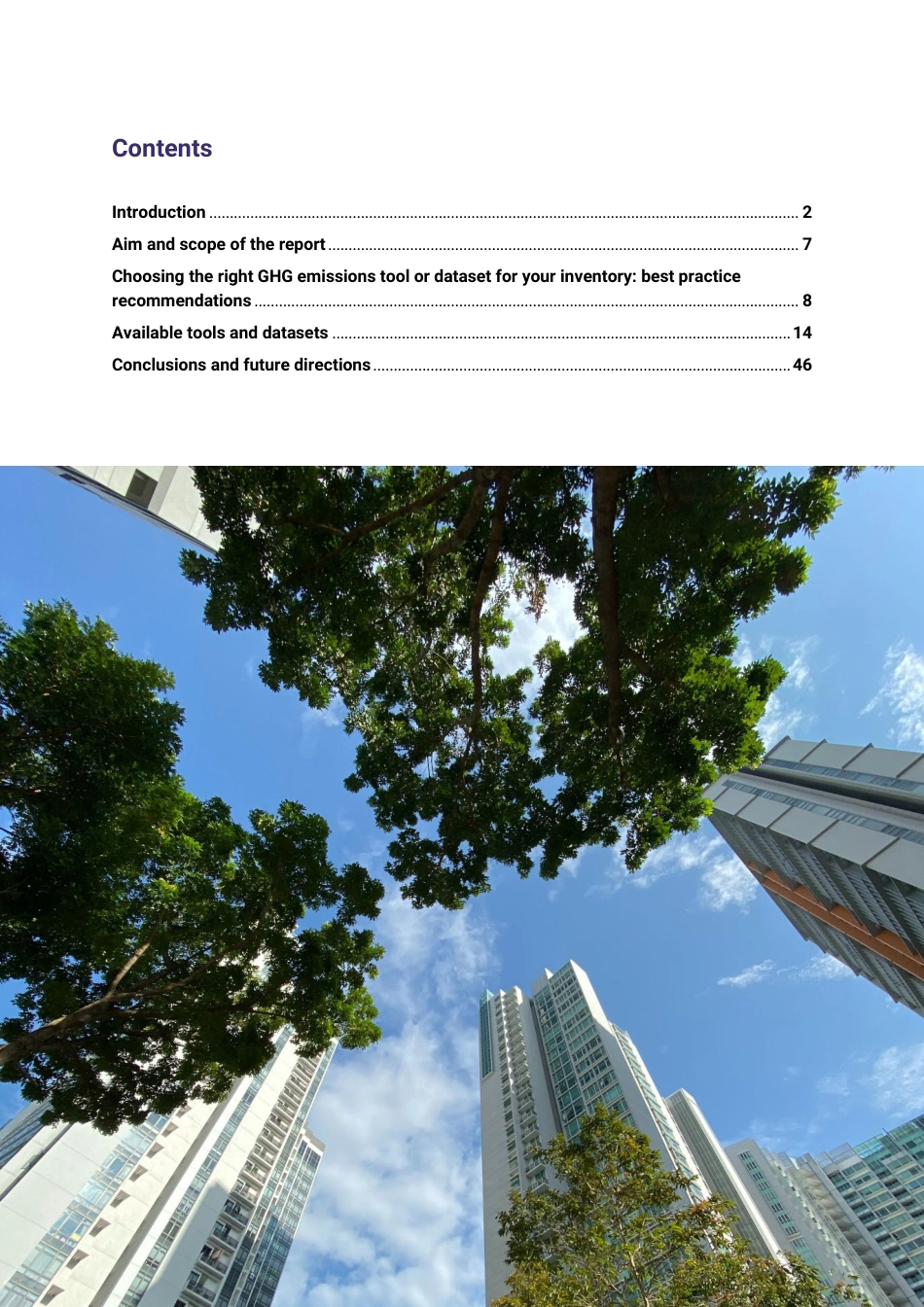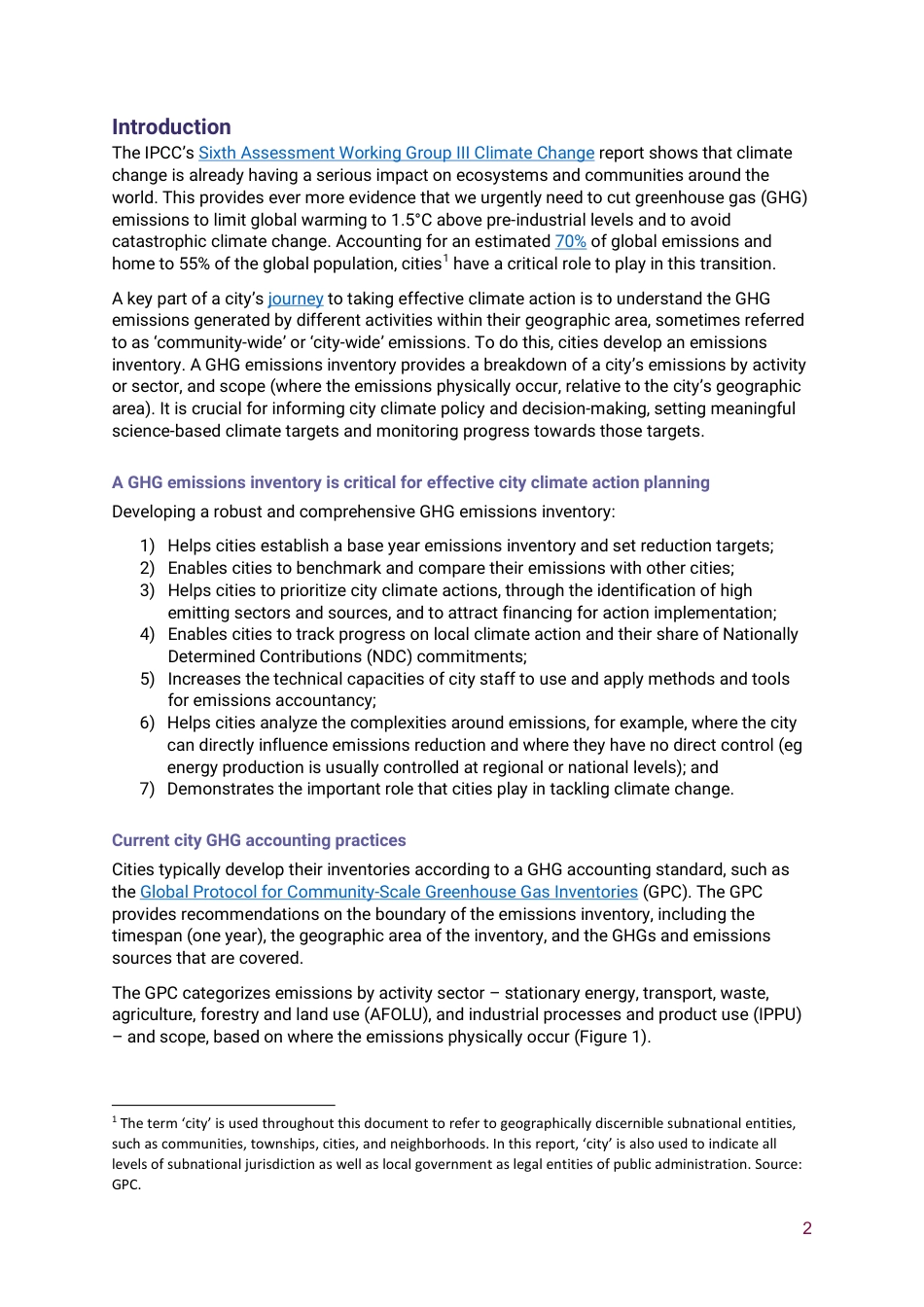GreenhouseGasEmissionsToolsandDatasetsforCitiesNovember2022FullReport1ContentsIntroduction................................................................................................................................................2Aimandscopeofthereport...................................................................................................................7ChoosingtherightGHGemissionstoolordatasetforyourinventory:bestpracticerecommendations.....................................................................................................................................8Availabletoolsanddatasets................................................................................................................14Conclusionsandfuturedirections......................................................................................................462IntroductionTheIPCC’sSixthAssessmentWorkingGroupIIIClimateChangereportshowsthatclimatechangeisalreadyhavingaseriousimpactonecosystemsandcommunitiesaroundtheworld.Thisprovidesevermoreevidencethatweurgentlyneedtocutgreenhousegas(GHG)emissionstolimitglobalwarmingto1.5°Cabovepre-industriallevelsandtoavoidcatastrophicclimatechange.Accountingforanestimated70%ofglobalemissionsandhometo55%oftheglobalpopulation,cities1haveacriticalroletoplayinthistransition.Akeypartofacity’sjourneytotakingeffectiveclimateactionistounderstandtheGHGemissionsgeneratedbydifferentactivitieswithintheirgeographicarea,sometimesreferredtoas‘community-wide’or‘city-wide’emissions.Todothis,citiesdevelopanemissionsinventory.AGHGemissionsinventoryprovidesabreakdownofacity’semissionsbyactivityorsector,andscope(wheretheemissionsphysicallyoccur,relativetothecity’sgeographicarea).Itiscrucialforinformingcityclimatepolicyanddecision-making,settingmeaningfulscience-basedclimatetargetsandmonitoringprogresstowardsthosetargets.AGHGemissionsinventoryiscriticalforeffectivecityclimateactionplanningDevelopingarobustandcomprehensiveGHGemissionsinventory:1)Helpscitiesestablishabaseyearemissionsinventoryandsetreductiontargets;2)Enablescitiestobenchmarkandcomparetheiremissionswithothercities;3)Helpscitiestoprioritizecityclimateactions,throughtheidentificationofhighemittingsectorsandsources,andtoattractfinancingforactionimplementation;4)EnablescitiestotrackprogressonlocalclimateactionandtheirshareofNationallyDeterminedContributions(NDC)commitments;5)Increasesthetechnicalcapacitiesofcitystafftouseandapplymethodsandtoolsforemissionsaccountancy;6)Helpscitiesanalyzethecomplexitiesaroundemissions,forexample,wherethecitycandirectlyinfluenceemissionsreductionandwheretheyhavenodirectcontrol(egenergyproductionisusuallycontrolledatregionalornationallevels);and7)Demonstratestheimportantrolethatcitiesplayintacklingclimatechange.CurrentcityGHGaccountingpracticesCitiestypicallydeveloptheirinventoriesaccordingtoaGHGaccountingstandard,suchastheGlobalProtocolforCommunity-ScaleGreenhouseGasInventories(GPC).TheGPCprovidesrecommendationsontheboundaryoftheemissionsinventory,includingthetimespan(oneyear),thegeographicareaoftheinventory,andtheGHGsandemissionssourcesthatarecovered.TheGPCcategorizesemissionsbyactivitysector–stationaryenergy,transport,waste,agriculture,forestryandlanduse(AFOLU),andindustrialprocessesandproductuse(IPPU)–andscope,basedonwheretheemissionsphysicallyoccur(Figure1)....



 VIP
VIP VIP
VIP VIP
VIP VIP
VIP VIP
VIP VIP
VIP VIP
VIP VIP
VIP VIP
VIP VIP
VIP